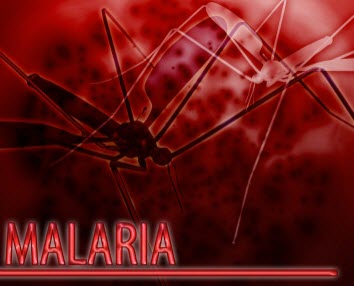Researchers Uncover Global, Evolving, and Historic Make-Up of Malaria Species
“Plasmodium vivax is going to be the last malaria parasite standing,” observes lead researcher
 A team of scientists has uncovered the global, evolving, and historic make-up of Plasmodium vivax, one of the five species of malaria that infect humans. The research, which links the spread of the parasite back to colonial seafaring, among other phenomena, underscores the challenges health experts face in controlling the parasite.Image credit: ©iStock/kgtohA team of scientists has uncovered the global, evolving, and historic make-up of Plasmodium vivax, one of the five species of malaria that infect humans. The research, which links the spread of the parasite back to colonial seafaring, among other phenomena, underscores the challenges health experts face in controlling the parasite.
A team of scientists has uncovered the global, evolving, and historic make-up of Plasmodium vivax, one of the five species of malaria that infect humans. The research, which links the spread of the parasite back to colonial seafaring, among other phenomena, underscores the challenges health experts face in controlling the parasite.Image credit: ©iStock/kgtohA team of scientists has uncovered the global, evolving, and historic make-up of Plasmodium vivax, one of the five species of malaria that infect humans. The research, which links the spread of the parasite back to colonial seafaring, among other phenomena, underscores the challenges health experts face in controlling the parasite.
“Plasmodium vivax is going to be the last malaria parasite standing,” observes Jane Carlton, a professor in New York University’s Department of Biology, who led the study. “Our findings show it is evolving in response to anti-malarial drugs and adapting to regional differences, indicating a wide range of approaches will likely be necessary to eliminate it globally.”
“The DNA data show that P. vivax has clearly had a different history of association with global human populations than other malaria parasites, indicating that unique aspects of its biology may have influenced the ways in which it spread around the world,” adds Daniel Neafsey, associate director of the Genomic Center for Infectious Disease at the Broad Institute, who generated the data and co-led the analysis.
P. vivax causes an estimated 15.8 million clinical malaria cases each year. However, it remains understudied because it is both less lethal than other species and because it has historically been difficult to analyze since it cannot be grown in the laboratory. Another challenge is separating the parasite’s DNA from human DNA.
In their study, which appears in the journal Nature Genetics, the research team sequenced approximately 200 DNA samples of P. vivax collected from patients—the largest number of P. vivax genomes sequenced to date—in 11 countries, including Brazil, Colombia, India, Mexico, Myanmar, Papua New Guinea, Peru, and Thailand. The scientists were able to separate P. vivax DNA from its human host by using a set of unique ‘sticky baits’ that captured the parasite DNA, enabling the human DNA to be washed away.
The researchers collected patient samples through the International Centers of Excellence for Malaria Research, a global network of independent research centers in malaria-endemic settings that provide knowledge, tools, and evidence-based strategies to support in-country researchers working in a variety of settings, especially within governments and healthcare institutions.
The sequencing of the parasite’s genome offered an array of new insights into the nature of P. vivax as it exists today and also served as a “genetic history book” of the studied regions:
• Central and South American P. vivax populations are very genetically diverse and distinct from all other contemporary P. vivax populations, suggesting that New World parasites may have been introduced by colonial seafarers and represent a now-eliminated European parasite population.
• Contemporary African and South Asian P. vivax populations are genetically similar, suggesting that South Asian P. vivax populations may have genetically mingled with European lineages during the colonial era—or, alternatively, reflect ancient connections between human populations in the Eastern Mediterranean, Middle East, and Indian subcontinent.
• The relatively homogeneous genetic makeup of P. vivax in Mexico reflects a steady decline of the disease in this country over the last decade, falling to under 10,000 cases.
• By contrast, the Papua New Guinea (PNG) population of P. vivax is very diverse relative to other P. vivax populations, with implications for developing different methods of control in this region of the world.
• P. vivax is significantly more genetically diverse than the more widely studied and deadlier malaria species P. falciparum, which may make it more elusive to methods of control and thus more difficult to eliminate.
• Resistant forms of two genes associated with antimalarial drug resistance have swept through the global population.
• Several genes were identified as adapting to regional differences in the human host and mosquito vector—for example, a gene involved in evasion of the mosquito immune response that enabled the species to successfully adapt to development and transmission in New World mosquito species.
Related Article: Scientists Gain Better Understanding of Malaria Growth in Mosquitoes
The research was conducted through the National Institute of Allergy and Infectious Diseases (NIAID)/National Institutes of Health (NIH) International Centers of Excellence for Malaria Research (U19AI089676, U19AI089681, U19AI089686, U19AI089672, U19AI089702) and Contract No. HHSN272200900018C, as well as supported by the National Council for Science and Technology Mexico (29005-M SALUD-2004-119), and the Victorian State Government Operational Infrastructure Support and the Australian Government (NHMRC IRIISS), among others.
